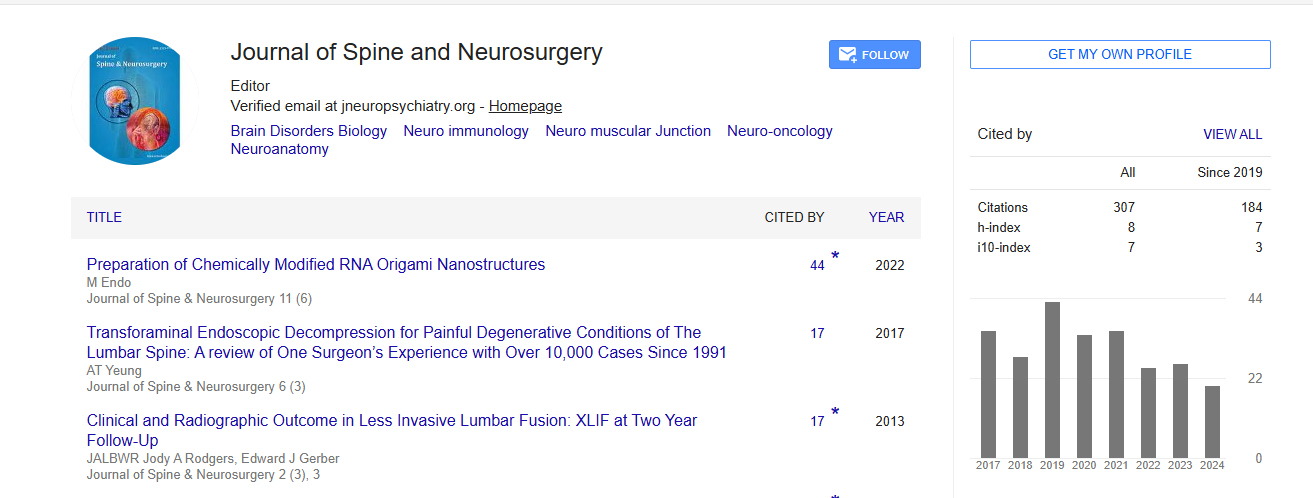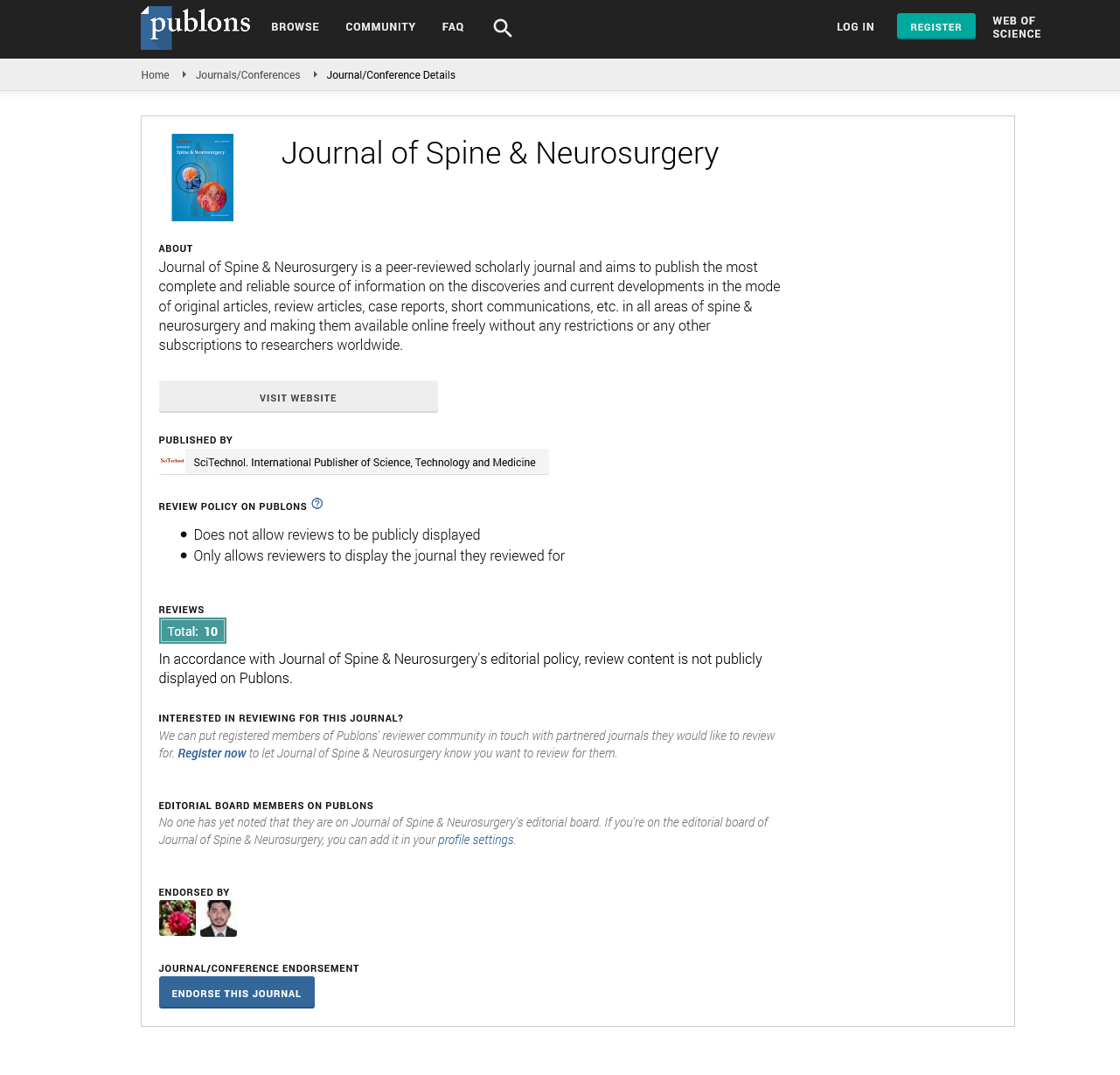The impact of COVID pandemic at a level III Trauma Center. Management of trauma patients with Spine Injuries
Joana Pascoa Pinheiro, David Gonçalves Ferreira, Filipe Ramos, Joaquim Soares do Brito, Samuel Martins, and
Marco Sarmento
Northern Lisbon University Hospital Centre (CHULN), Portugal
: J Spine Neurosurg
Abstract
The SARS-CoV-2 pandemic was responsible for the restructuring of hospitals to accommodate admissions related to COVID-19. Essential services, such as Trauma, had to readapt to maintain their functionality and thus guarantee quick access in case of an emergency. This study describes the impact of COVID-19 on a Level III Trauma Center and particularly on the clinical management of hospitalized patients with spine injuries. This is a retrospective study whose results were obtained through medical records from 2019 and 2020 of patients with spine injuries (March 1st to December 31st). A comparison between the two groups was made. Patients with injuries in the context of trauma who underwent surgery were included. Patients with an injury in a non-traumatic context or not surgically treated were excluded. In total 137 patients underwent surgery of which 71 in 2019 (51.8%) without significant differences in intergroup comparisons. The most frequent injury mechanism in 2019 was motor vehicle crash (47.9%) compared to 2020 which was fall from height (37.9%), being cervical trauma the most frequent spine injury in both years. There was a significant decrease in the need for intensive care in 2020, 51.4% vs 30.3%, p = .015 and the number of complications was also lower in 2020 (1.35% vs 0.98%), being the difference marginally significant. There were no significant differences regarding time for presentation to surgery or days of hospitalization. The restructuring at a Level III Trauma Center was effective, with no significant differences between the years of 2019 vs 2020 when compared time for presentation to surgery or the number of days of hospitalization. It was also found that lockdown rules were probably responsible for the decrease of road traffic accidents, which justifies a significant decrease in the need for intensive care as well as in the number of complications.
 Spanish
Spanish  Chinese
Chinese  Russian
Russian  German
German  French
French  Japanese
Japanese  Portuguese
Portuguese  Hindi
Hindi 
